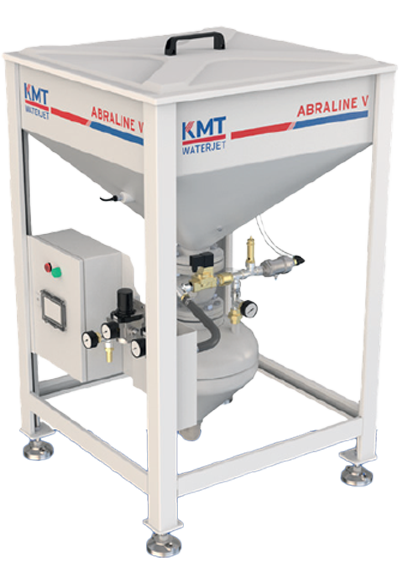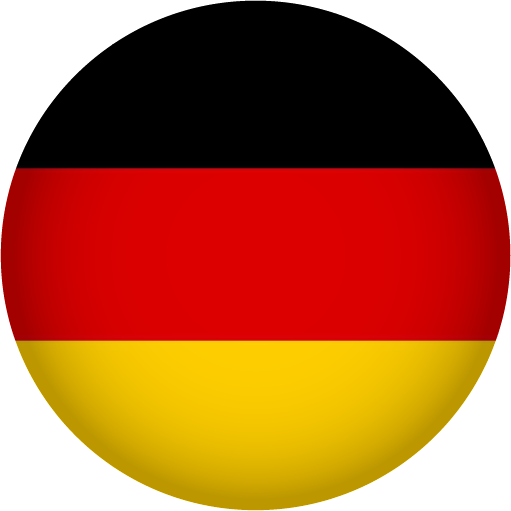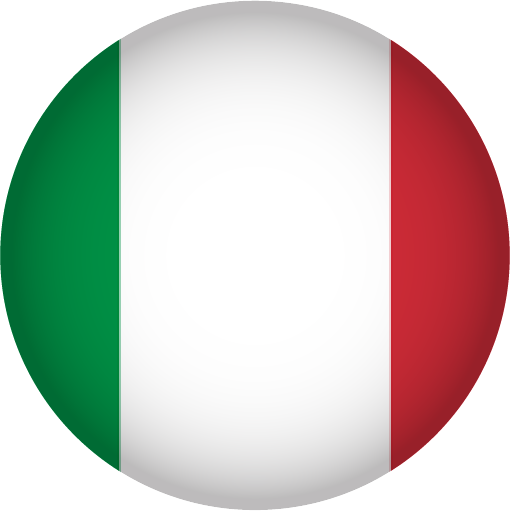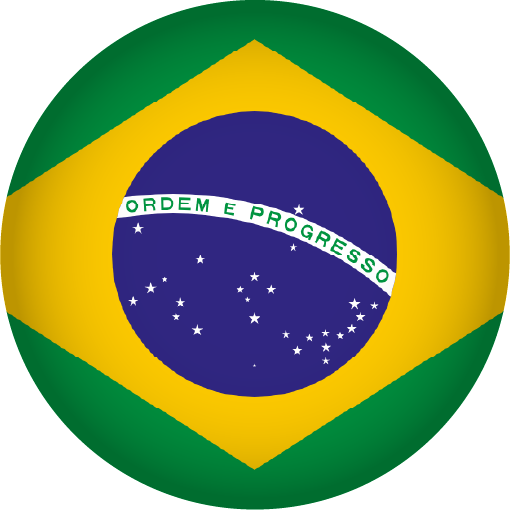We and selected third parties use cookies or similar technologies for technical purposes and, with your consent, for other purposes. You can consent to the use of such technologies by using the “Accept” button, by closing this notice, by scrolling this page, by interacting with any link or button outside of this notice or by continuing to browse otherwise.
- CUTTING SOLUTIONS
- PRODUCTS

COMPLETE SYSTEMS
KMT waterjet OEM partner machines are powered by KMT pumps ranging from 6.200 bar to 3.800 bar, with installations available in over 100 countries.

PRO 6.200 bar Pumps – World’s Fastest Waterjet
The KMT Streamline PRO® 6.200 bar Waterjet Pumps will significantly increase production by cutting in less time and use up to 50% less abrasive to produce the Lowest Cost Per Part! The PRO pump is available in three horse-powers for a wide range of cutting applications: 125 and 60 PS

ABRALINE IV Abrasive Hopper
Precisely monitors abrasive feed usage during entire cutting process. Designed for large cutting machines which operate continuously and with multiple cutting heads. Capacity – 1.000 kg

STREAMLINE® SL-VI 4.100 bar Pumps
KMT Waterjet SL-VI Pumps have decades of proven performance and are considered the Industry Workhorse! The SL-VI Series of pumps are available in: 15, 30, 50 und 100 PS

ABRALINE V Abrasive Hopper
Precisely monitors abrasive feed usage during entire cutting process. Designed to sufficiently ensure the abrasive feed for average cutting needs. Capacity – 425 kg

KMT CLASSIC V-Drive 3.800 bar Energy Saving Pump
The STREAMLINE® CLASSIC with V-Drive combines the KMT proven intensifier concept with energy saving drive and control technology for energy savings and efficient waterjet cutting. Equipped with a speed-controlled motor drive, the CLASSIC V-Drive satisfies any criteria specifying an energy saving machinery.

FEEDLINE V Abrasive Feeder
Optimized abrasive consumption for customized applications. Controlled through a central CNC controller or a potentiometer, the FEEDLINE V supplies the cutting nozzle with the optimized flow of abrasive, saving material and costs.

ATS Abrasive Removal Systems
Never shut down production for tank clean outs again. The all new ATS 2200 or 4400 is the perfect way to improve your waterjet operations.

IDE® Diamond Cutting Heads
The KMT Waterjet IDE® (Integrated Diamond Eductor) One-piece Assembly Cutting Head is rated for pressures from 4.100 bar to 6.200 bar and is a waterjet nozzle breakthrough in simplicity & peak performance.

AUTOLINE® Cutting Heads
The self-aligning components of the KMT AUTOLINE® 4.100 bar and 6.200 bar cutting heads provide true, perfect alignment to extend the life of focusing tubes and mixing chambers.

AQUALINE® Water-only Cutting Heads
PROVEN PERFORMANCE AT EXTREME PRESSURES! Our AQUALINE® pure water pneumatic valves have gained an industry-wide reputation for being among the quickest and the most reliable pure water cutting heads under extreme working conditions.

KMT CUT Calculator App
Compare 6.200 bar vs. 4.100 bar cutting and see how much faster you get the job done and at a lower cost per part! The KMT Waterjet Cut Calculator 2.0 App incorporates 25 materials, offers a wider range of substrate thicknesses, horsepower, orifice size, and abrasive rates.

ARA 3.800 bar Pump
The Ara™ high-pressure pump meets all essential requirements for successful, economical and seamless operation of a waterjet cutting system. The highly reliable “SSEC” intensifier design is one of the key features of the AraTM pump.
- COMPLETE SYSTEMS
- ABRALINE IV Abrasive Hopper
- PRO 6.200 bar Pumps
- ABRALINE V Abrasive Hopper
- SL-VI 4.100 bar Pumps
- FEEDLINE V Meter
- Classic V-Drive 3.800 bar Pump
- ATS Abrasive Removal Systems
- ARA 3.800 bar Pump
- IDE Diamond Cutting Head
- AUTOLINE Cutting Head
- AQUALINE Water-only Cutting Head
- Cut Calculator App
- APPLICATIONS/INDUSTRIES
faq's - Waterjet Technology in the Military Defense Industry



Here are frequently asked questions (FAQs) about waterjet cutting in the defense Industry
Why is waterjet technology preferred in the military defense industry? Waterjet technology is preferred in the military defense industry due to its precision, versatility, and ability to cut a wide range of materials without generating heat. This ensures that there are no Heat-Affected Zones (HAZ), which can alter the properties of the material and compromise the integrity of military components. The technology also eliminates the need for secondary finishing as it produces smooth, burr-free edges, making it ideal for the stringent requirements of defense applications.
What materials can waterjet technology cut in the defense industry? Waterjet technology can cut a variety of materials used in the defense industry, including titanium, Inconel, brass, aluminum, steel, and composites ranging from .99 mm to 152 mm in thickness. This versatility allows for the production of various military components, from aircraft fuselages and rotary blades to sheet-metal parts and composite armor, all while maintaining tight tolerances and high-quality finishes.
How does waterjet cutting benefit the manufacturing of military aircraft? In military aircraft manufacturing, waterjet cutting is beneficial because it can accurately cut complex shapes and contours required for fuselages, tail and wing sections, and other critical components. The technology supports five-axis and fully integrated six-axis motion control, enabling precise cuts on metal parts up to 305 mm thick. The thicker the material, it is recommended to use the ultrahigh-pressure waterjet pump with operating pressure at 6.200 bar compared to 4.100 bar. The KMT Streamline PRO Series with 125hp and 60hp, will provide a cleaner, faster, and lower cost per finished part, compared to cutting at 4.100 bar. This power and precision is crucial for maintaining the structural integrity and performance of military aircraft.
What are the advantages of using waterjet cutting for composite materials in defense applications? The advantages of using waterjet cutting for composite materials in defense applications include the ability to cut intricate designs without causing delamination or other damage. Waterjet cutting ensures clean edges and precise dimensions, which are essential for the performance and reliability of composite components used in military vehicles, aircraft, and protective gear.
How does waterjet cutting meet the stringent tolerances required in the defense industry? Waterjet cutting meets the stringent tolerances required in the defense industry by providing precise and consistent cuts. The technology allows for cutting materials to exact specifications, ensuring that components fit together perfectly and function as intended. The lack of heat generation also means that the material properties remain unchanged, which is critical for maintaining the strength and durability of military parts.
What role does waterjet technology play in the production of armored vehicles? Waterjet technology plays a significant role in the production of armored vehicles by cutting materials like steel and composite armor to precise shapes and sizes. The ability to cut thick materials, up to 305 mm in some cases, with clean edges and no heat distortion ensures that the armor retains its protective properties. This precision is vital for creating effective and reliable armor systems for military vehicles.
Why is the elimination of secondary finishing important in defense manufacturing? The elimination of secondary finishing is important in defense manufacturing because it reduces production time and costs while ensuring the highest quality of components. Waterjet cutting produces smooth, burr-free edges, which means that parts can be assembled or used immediately without additional processing. This is crucial in the defense industry, where timely delivery and precision are paramount.
How does waterjet technology enhance the safety and reliability of military equipment? Waterjet technology enhances the safety and reliability of military equipment by providing precise cuts that meet exact specifications, ensuring that components perform as expected under extreme conditions. The absence of HAZ means that the material properties are not compromised, leading to stronger and more reliable parts. This is essential for maintaining the operational readiness and safety of military equipment.
What makes KMT Waterjet products suitable for defense applications? KMT Waterjet products are suitable for defense applications because of their high-pressure intensifier pump technology and advanced abrasive waterjet cutting heads. These products can cut a wide range of materials with high precision and no heat distortion. KMT’s global network of OEM experts can customize complete waterjet machine systems to meet the specific needs of defense manufacturers, ensuring that the technology is tailored to produce the highest quality components.
How does waterjet cutting contribute to the innovation and advancement of military technologies? Waterjet cutting contributes to the innovation and advancement of military technologies by enabling the precise and efficient production of complex and advanced components. The ability to cut with 5-axis and 6-axis robotic cells offer a wide variety of materials to exact specifications allows for the development of new and improved military equipment and systems. This technology supports the continuous evolution of defense capabilities, ensuring that military forces have access to cutting-edge tools and technologies.
The KMT Waterjet global OEM network, such as Water Jet Sweden below, offers five-axis and six-axis robotic solutions for waterjet cutting in the defense industry:
Below are thirty materials that waterjet can cut but laser and plasma cannot due to heat issues:
- Rubber (natural and synthetic)
- Carbon fiber composites
- Kevlar
- Laminated glass
- Tempered glass
- Porcelain
- Ceramic tiles
- Foam (polyurethane, polystyrene)
- Fiberglass
- Wood (hardwoods, softwoods, plywood, MDF)
- Acrylic
- Polycarbonate
- PVC
- HDPE (high-density polyethylene)
- Leather
- Fabrics (textiles)
- Paper
- Cardboard
- Cork
- Felt
- Insulation materials
- Neoprene
- Slate
- Limestone
- Sandstone
- Rubber-metal composites
- Plastic-metal composites
- Thin films (plastic, metal)
- Epoxy resins
- Gaskets (various materials)
By avoiding the introduction of heat, waterjet cutting ensures these materials can be cut without warping, burning, or compromising their structural integrity, making it an invaluable tool in the defense industry.
This versatility and precision make waterjet technology, powered by KMT Waterjet pumps and cutting nozzles, a valuable tool across a multitude of industries and applications.

Welcome to KMT Waterjet. To continue, please select a language from the options below.

HELP CENTER
Contact form
KMT Waterjet has global offices to assist you in your region. Contact us using the following form, and the message will be forwarded to the local office which can provide the best support.
Contact form
KMT Waterjet has global offices to assist you in your region. Contact us using the following form, and the message will be forwarded to the local office which can provide the best support.























